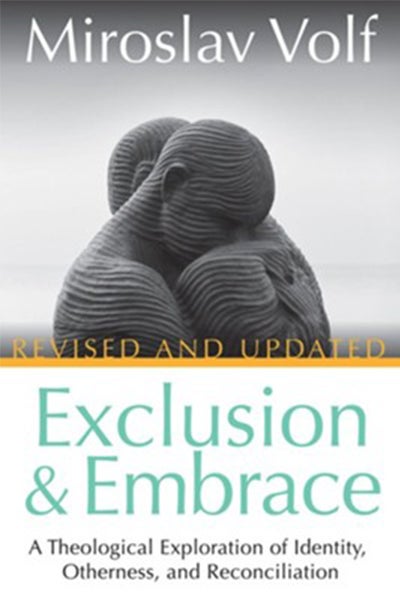Reviewed by Josiah Taru, Boniuk Institute
The second edition of Exclusion and Embrace, written two and half decades after the first edition, demonstrates that the world still grapples with the challenges of identity-based conflicts. Drawing from the war in Yugoslavia in the 1990s, Christian theologian Miroslav Volf shows how the polarized identities – based on religion, race, and ethnicity - responsible for the war in Yugoslavia in the 1990s, are still with us today. Volf proposes a Christ-centered theology of embrace to break the resurgence of identity-based conflicts. In part one, Volf calls Christians to embrace people from diverse identities by recognizing their worthiness and dignity as fellow human beings. Christianity modeled around Jesus leads to porous identities that accept differences and find how to co-exist with differences. Volf's key contribution is that reconciliation informed by the principles of Triune God seeks neither to homogenize nor eradicate differences. Instead, it respects and celebrates diversity in humanity (p.98). In part two, Volf illustrates how Christian values have the potential to break the vicious cycle of conflicts and war. Christian values enrich justice, truth-telling, and reconciliation.
Volf puts across the theology of embrace in a lucid and nuanced way. Every chapter opens with a discussion of incidents from the war in Yugoslavia or Volf's personal experience, followed by intellectual debates and modernist theoretical insights that inform current peacebuilding, justice, reconciliation, equality, and truth-telling. Volf then critiques the modernist approaches and proposes alternative approaches derived from the Triune God. Each chapter concludes with theological reflections, showing how the Triune God has provided a model for Christians to follow. The drama of embrace--described in chapter four--is Volf's major contribution to peacebuilding and reconciliation. The embrace involves four stages: opening arms to welcome 'the other'; then waiting for 'the other' to come close; closing arms in an embrace that turns 'the other' into a friend; and opening arms again to allow the friend to be independent and free. The drama of embrace is a practical and powerful concept that vividly illustrates porous and malleable identities, forgiveness, love, and freedom derived from the Cross.
Volf over-emphasizes the capacity of Christianity to construct malleable, welcoming, welcoming, and forgiving individuals. The rise of Christian nationalism across the globe provides examples of how Christianity can be divisive and toxic. Despite this caveat, Exclusion and Embrace is written in a way that makes it accessible to different categories of readers. Through creatively weaving personal experience, intellectual debates, and theological reflections, Volf's style appeals to the general public, non-Christians, academics and scholars, and Christian clergy and laity. Exclusion and Embrace is a book I recommend to scholars and students studying religious studies, theology, peace studies, political science, history, anthropology, and psychology. it is a book that politicians, practitioners, chaplains, Diversity Equity and Inclusion officers, and members of commissions tasked with leading reconciliation efforts must have, as it offers step-by-step guidance on reconciliation in the context of polarization and violence.
Volf, Miroslav. Exclusion and Embrace: A Theological Exploration of Identity, Otherness, and Reconciliation, Nashville, TN: Abington Press, 2020.

